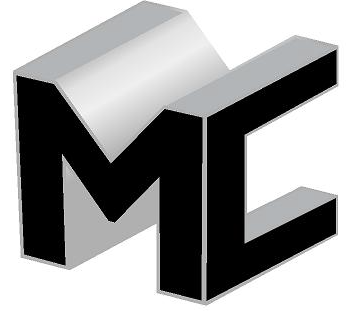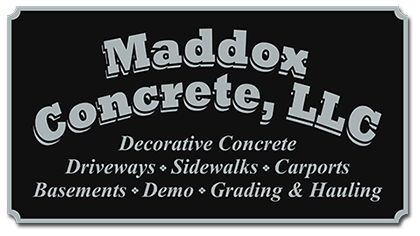

Mold on concrete can be both an eyesore and a health hazard. Whether it’s in your basement, driveway, or patio, addressing the issue promptly is essential. This guide will walk you through the process of how to remove mold from concrete, ensuring your surfaces are clean, safe, and mold-free.
The Concrete Mold Problem
Mold thrives in damp, dark environments, and concrete, despite its durability, can provide an ideal breeding ground. When moisture is present, mold spores can settle on concrete surfaces, leading to growth. This not only damages the appearance of your concrete but can also lead to respiratory issues and other health problems for those exposed. Recognizing and addressing a concrete mold problem quickly can prevent long-term damage and health risks.
Preparation: Safety First
Before you begin the process to kill mold on concrete, it’s important to take safety precautions. Mold can release spores that are harmful when inhaled. Here’s what you’ll need:
- Protective gloves
- Safety goggles
- Face mask or respirator
- Long-sleeved clothing
Wearing protective gear will help minimize your exposure to mold spores and the cleaning agents you’ll be using.
Tools and Materials Needed
Gather the following tools and materials to effectively remove mold from concrete:
- Stiff-bristle brush
- Bucket
- Water
- Detergent
- Bleach or vinegar
- Spray bottle
- Pressure washer (optional)
- Scrub brush
- Hose (if outdoors)
Step-by-Step Guide to Removing Mold from Concrete
Step 1: Clear the Area
Remove any furniture, plants, or items that may be obstructing the moldy concrete. This will give you a clear working area and prevent further contamination of your belongings.
Step 2: Dry the Concrete Surface
Mold needs moisture to grow, so drying the area as much as possible before starting the cleaning process is crucial. Use a fan, dehumidifier, or simply wait for a dry day if you’re working outdoors.
Step 3: Scrub the Surface
Mix water with a small amount of detergent in a bucket. Using a stiff-bristle brush, scrub the moldy concrete surface to remove as much mold as possible. This initial scrubbing will help loosen the mold from the concrete.
Step 4: Apply a Cleaning Solution
There are several solutions you can use to kill mold on concrete:
Using Bleach
Bleach is highly effective at killing mold. Mix one cup of bleach with one gallon of water. Pour the solution into a spray bottle and apply it generously to the affected area. Let it sit for 10-15 minutes.
Using Vinegar
Vinegar is a natural alternative to bleach. Pour undiluted white vinegar into a spray bottle and apply it to the moldy area. Allow it to sit for at least one hour. Vinegar not only kills the mold but also helps prevent future growth.
Step 5: Scrub Again
After applying the cleaning solution, use the stiff-bristle brush to scrub the area again. This will help ensure that the mold is fully removed from the concrete’s pores.
Step 6: Rinse the Area
Use a hose or a bucket of clean water to rinse the concrete thoroughly. If you’re working indoors, you can use a wet-dry vacuum to suck up the excess water. For outdoor areas, a garden hose or pressure washer can be used to rinse away the cleaning solution and mold residue.
Step 7: Dry the Surface
Ensure the concrete surface is thoroughly dried after rinsing. Use fans, a dehumidifier, or wait for a sunny day if you’re working outside. Keeping the area dry will help prevent mold from returning.
Preventing Future Mold Growth on Concrete
Improve Ventilation
Improving ventilation in areas prone to moisture, like basements and garages, can significantly reduce the likelihood of mold growth. Installing exhaust fans or using dehumidifiers can help keep the air dry.
Use Mold-Resistant Products
There are various mold-resistant sealers and paints available that can be applied to concrete surfaces. These products create a barrier that prevents moisture from penetrating the concrete, thus inhibiting mold growth.
Regular Cleaning
Regularly cleaning your concrete surfaces can help prevent mold from taking hold. Sweep away debris, and clean up any spills or standing water promptly.
Fix Leaks
If water is seeping into your basement or garage, identify and repair the source of the leak. Waterproofing your home’s foundation and ensuring proper drainage around your property can help keep concrete dry.
When to Call a Professional
While many mold removal tasks can be handled by homeowners, there are instances where professional help may be necessary. If the mold covers a large area, if you’re dealing with black mold, or if the mold keeps returning despite your efforts, it’s best to consult with a mold remediation specialist. Professionals have the tools and expertise to handle severe mold problems and can ensure that your concrete surfaces are thoroughly cleaned and treated.
Conclusion
Removing mold from concrete doesn’t have to be a daunting task. With the right tools, cleaning solutions, and a bit of elbow grease, you can effectively kill mold on concrete and restore the appearance and safety of your surfaces. Remember to take safety precautions, use the appropriate cleaning agents, and take steps to prevent future mold growth. By addressing a concrete mold problem promptly and thoroughly, you can maintain a clean and healthy environment in your home or outdoor spaces.
Need Concrete Contractors in Sanford, NC?
We are the area’s best concrete company. We specialize in concrete finishing of all types of concrete for residential and commercial customers. Our services include pavement, driveways, footings, sidewalks, decorative concrete, hauling, demolition, and property grading. We’re fully insured. Contact us today for quality workmanship and service.

